![]()
![]()
![]()
Use LEFT and RIGHT arrow keys to navigate between flashcards;
Use UP and DOWN arrow keys to flip the card;
H to show hint;
A reads text to speech;
85 Cards in this Set
- Front
- Back
|
Harlem Renaissance
|
Def: This was a period of time in the 1920s in which African-American culture witnessed great strides in literature, art, and other forms of creativity.
Sig: This was the first time that African Americans had great strides of success in literature, art, and other creativity in America. |
|
|
The Scopes Trial
|
Def: This trial was a fight over whether or not evolution in the role of science and religion should be discussed and taught in American public schools.
Sig: The Fundamentalists lost and began to withdraw from National politics and mainstream culture. |
|
|
Immigration (1900s)
|
Def: After the depression of the 1890s, immigration jumped from a low of 3.5 million in that decade to a high of 9 million in the first decade of the new century.
Sig: The amount of immigration skyrocketed which led to less available living and working space for many Americans. |
|
|
19th Amendment
|
Def: The amendment guarantees all American women the right to vote.
Sig: It took a lot of protesting and efforts from women but eventually they go their voting right. |
|
|
18th Amendment
|
Def: The 18th Amendment to the U.S. Constitution banned the manufacture, sale, and transportation of alcohol (i.e. the beginning of Prohibition).
Sig: This amendment banned alcohol in the 1920’s which lead to the creation of speakeasies and bootleggers. |
|
|
21st Amendment
|
Def: This act repealed the Eighteenth Amendment to the United States Constitution, which had mandated nationwide Prohibition on alcohol.
Sig: People were very happy about the passing of this act. This was also the only amendment of the first 27 amendments that repealed another amendment. |
|
|
Speakeasies
|
Def: These were hidden saloons and underground nightclubs drinkers went to in order to obtain liquor illegally.
Sig: During the 20’s liquor was outlawed so this is one of the ways that people were able to obtain alcohol. |
|
|
“Roaring Twenties”
|
Def: This was a term used to characterize the early 1920’s distinctive cultural edge in New York City, Chicago, Paris, Berlin, London, and many other major cities during a period of sustained economic prosperity.
Sig: This was a very prosperous time right before the great depression. |
|
|
Flappers
|
Def: This was a new ideal of an emancipated young woman who embrace the new fashions and urban attires of the day.
Sig: The Flapper style was what was popular for women do dress like in the 1920’s. |
|
|
Prohibition
|
Def: This was an era during which the manufacture, sale, and transportation alcohol beverages were legally prohibited.
Sig: This lead to the creation of speakeasies and bootleggers. |
|
|
Bonus Army
|
Def: A group of approx. 10,000-20,000 WWI vets and their families from all over the country who had been promised a bonus which Congress kept putting off.
Sig: Eventually they camped in Wash. to protest to non-payment of their bonuses. After rioting, Hoover ordered MacArthur to remove the veterans which MacArthur was only too glad to do. They used tear gas and swords to drive the veterans from Wash. |
|
|
Hoboes
|
Def: These were migrant workers who rode from place to place on trains.
Sig: These were the first widely known type of Hobo that existed in the U.S. |
|
|
New Deal
|
Def: This program was designed to alleviate the problems of the Great Depression. Its name was taken from a campaign speech in which Roosevelt had to promise “a new deal for the American people.” The new deal policies focus on three general goals: relief for the needy, economic recovery, and financial report.
Sig: The New Deal was not as successful as FDR had intended for it to be. |
|
|
CCC
|
Def: The CCC employed age 18 to 25 to work railroads, developing parks, planting trees and helping in soil- erosion and flood control projects. By the time the project ended almost 3,000,000 young man had passed through the CCC.
Sig: This was a very successful program that helped a lot of people. |
|
|
SEC/FDIC
|
Def: Preserves and promotes public confidence in the U.S. financial system by insuring deposits in banks and thrift institutions for at least $250,000; by identifying, monitoring and addressing risks to the deposit insurance funds; and by limiting the effect on the economy and the financial system when a bank or thrift institution fails.
Enforces federal securities laws and regulates the securities industry. Sig: This helped bank accounts become more secure after the stalk market crashes towards the end of the 1920’s |
|
|
FDR-Court Packing
|
Def: President Roosevelt proposed legislation that would have altered the makeup of the Supreme Court. The Judiciary Reorganization Bill of 1937, which provided for broad reform of the federal judicial system, allowed President Roosevelt to appoint an additional member to the Supreme Court for every sitting justice over the age of 70
Sig: The bill was not passed because the main supporter of the bill died of a heart attack before it could be passed. |
|
|
The 3 “Rs”
|
Def: The three “R”s were relief, recovery, and reform.
Sig: The three “R”s were all part of FDR’s New Deal Plan. |
|
|
Neutrality
|
Def: Passed by Congress in 1935 in an effort to keep the U.S. out of future wars. The acts outlawed arms sales or loans to nations at war and extended the ban on arms sales and loans to nations engaged in civil wars.
Sig: This act helped to keep America out of the war. |
|
|
Appeasement
|
Def: Giving up principles to pacify an aggressor.
Sig: Britain and France used this on Germany. |
|
|
Lend-Lease Act
|
Def: Passed by Congress in 1941 it allowed the U.S. to lend or lease arms and other supplies to “any country whose defense was vital to the U.S.”
Sig: This was one of the first acts that stepped away from the idea of isolationism which America was quite fond of in world war 1 and a step towards world involvement. |
|
|
Pearl Harbor
|
Def: Hundreds of Japanese fighter planes attacked the American naval base at Pearl Harbor near Honolulu, Hawaii.
Sig: This incident is what caused us to join WWII even though we were trying to avoid it. |
|
|
Axis Powers
|
Def: Germany Italy and Japan signed a mutual defense treaty, the Tripartite Pact and became known as the Axis Powers.
Sig: These were our enemies in WWII |
|
|
Nisei
|
Def: Second-generation Japanese Americans.
Sig: They faced a lot of racial prejudice during WWII. |
|
|
Hiroshima & Nagasaki
|
Def: Hiroshima was a Japanese military center and the first place that we bomb on August 6. The name of the bomb which destroyed Hiroshima was little boy and it was released by Enola Gay.
Three days later we bombed Nagasaki with a bomb codenamed the fat man. This bomb leveled half the city and by the end of the year an estimated 200,000 people have died as a result of injuries and radiation poisoning caused by the atomic blasts Sig: This left japan unable to fight and eventually Japan's Emperor Hirohito announced his country's unconditional surrender in World War II in a radio address on August 15th. |
|
|
Holocaust
|
Def: The systematic murder of 11 million people across Europe (more than half were Jews). This was Hitler’s way to create racial purity.
Sig: 6 million European Jews were murdered during this time period. |
|
|
Executive Order 9066
|
Def: Ten weeks after the Japanese bombed Pearl Harbor, U.S. President Franklin D. Roosevelt signs Executive Order 9066, authorizing the removal of any or all people from military areas "as deemed necessary or desirable."
Sig: More than 110,000 Japanese Americans were relocated to remote internment camps built by the U.S. military in scattered locations around the country. |
|
|
Berlin Blockade
|
Def: An attempt in 1948 by the Soviet Union to limit the ability of France, Great Britain and the United States to travel to their sectors of Berlin
Sig: The blockade was the first major clash of the Cold War and foreshadowed future conflict over the city of Berlin. |
|
|
Domino Theory
|
Def: The theory that if one country falls to communism then others will follow.
Sig: This was the fear of many Americans around the time of WWII. They were afraid that more countries would convert and then try to force America to convert to communism. |
|
|
Marshall Plan
|
Def: This was an act similar to the Truman Doctrine however now instead of sending money just to Greece and Turkey they sent out $13 billion in aid to 16 European countries. This plan was successful and caused many countries to loose interest in communism.
Sig: Channeled over $13 billion to finance the economic recovery of Europe. |
|
|
GI Bill of Rights
|
Def: Also known as the Servicemen’s Readjustment Act this bill provided education and training for veterans, paid for by the federal government. This bill was created in hopes of making the transition of returning servicemen to civilian life easier.
Sig: The economic assistance provided by the G.I. bill and the Veterans' Administration accelerated the postwar demand for goods and services. |
|
|
Consumerism
|
Def: This was the buying of Material goods, and it came to be equated with success.
Sig: This was when Americans changed what they considered to be success. |
|
|
Baby Boom
|
Def: This was an explosion in the population after the period of war.
Sig: This contributed to a huge increase in sales for toys and many other things that are necessary for a child. |
|
|
HUAC
|
Def: One of the most popular agencies responsible for an Investigating possible communist influence. They were responsible for sending the Hollywood 10 to prison.
Sig: HUAC's controversial tactics contributed to the fear, distrust and repression that existed during the anticommunist hysteria of the 1950s |
|
|
NATO
|
Def: This was a defensive military alliance against the Soviet Union created by Belgium, Denmark, France, Great Britain, Iceland, Italy, Luxembourg, the Netherlands, Norway, and Portugal. The 12 members of NATO pledged that they would help the other nations if they were attacked.
Sig: It made countries feel safe from other possible Soviet Aggression and greatly increased American influence in Europe. |
|
|
Warsaw Pact
|
Def: This was a military war pact that West Germany had created. The pact linked the soviets with seven eastern countries.
Sig: This stemmed from Americas idea to create NATO and threatened many countries in Europe. |
|
|
McCarthyism (Joe McCarthy)
|
Def: These were attacked unsuspected communists in the early 1950s that started when McCarthy made taking advantage of people concerned about communism.
Sig: Few people thought that this was an unethical which proves how terrified people were of communism. |
|
|
Korean War
|
Def: this was the war that broke out in South Korea went on June 25, 1950 North Korean forces swept across the 30th parallel in a surprise attack on South Korea.
Sig: American troops had entered the war on South Korea’s behalf. As far as American officials were concerned, it was a war against the forces of international communism itself. |
|
|
Bay of Pigs
|
Def: In April 1961, the CIA launched what its leaders believed would be the definitive strike: a full-scale invasion of Cuba by 1,400 American-trained Cubans who had fled their homes when Castro took over.
Sig: The invaders were badly outnumbered by Castro’s troops, and they surrendered after less than 24 hours of fighting. |
|
|
Cuban Missile Crisis
|
Def: leaders of the U.S. and the Soviet Union engaged in a tense, 13-day political and military standoff in October 1962 over the installation of nuclear-armed Soviet missiles on Cuba, just 90 miles from U.S. shores.
Sig: U.S. agreed to Soviet leader Nikita Khrushchev's offer to remove the Cuban missiles in exchange for the U.S. promising not to invade Cuba. |
|
|
Peace Corp
|
Def: This was a program of volunteer assistance to the developing nations of Asia, Africa, and Latin America.
Sig: This program was a huge success and many people wanted to volunteer. It was created to keep other countries from falling to communism. |
|
|
Little Rock 9
|
Def: These were a group of nine students that tried to attend Central High School in Arkansas. However, on their first day Governor Orval Faubus called the National Guard to keep the students from entering. President Dwight D. Eisenhower sent in federal troops to escort the "Little Rock Nine" into the school.
Sig: This was an eye opening and extremely controversial situation for many Americans. |
|
|
Malcolm X
|
Def: Malcolm X was a very popular civil rights activist. He was also an Islamic minister after he was released from prison in 1950.
Sig: Malcolm X contributed hugely to the eventual fall of black discrimination. |
|
|
NAACP
|
Def: National Association for the Advancement of Colored People (NAACP) was one of the earliest and most influential civil rights organizations in the United States.
Sig: Many different civil rights movements were accomplished because of this group such as Brown v. Board of Education and anti- lynching laws. |
|
|
MLK
|
Def: He was the pastor of Dexter Avenue Baptist Church who lead the Montgomery bus cot.
Sig: He was a very significant civil rights activist. |
|
|
Civil Rights Act of 1964
|
Def: This was an act which prohibited decimation because of race, religion, national origin, and gender. It gave all citizens the right to enter libraries, parks, washrooms, restaurants, theaters, and other public accommodations.
Sig: This was enacted because of the Brown v. Board of Education in Topeka which eliminated the “Separate but Equal” viewpoint. |
|
|
Voting Rights Act of 1965
|
Def: Overcame legal barriers at the state and local levels that prevented African Americans from exercising their right to vote under the 15th Amendment.
Sig: This was an act which eliminated the literacy tests that had disqualified many voters. |
|
|
“The New Frontier”
|
Def: Kennedy set out to transform his broad vision of progress into what he called the new frontier. This was basically Kennedy’s efforts to expand our world in terms of science and space.
Sig: It was very successful and eventually put the first person on the moon in what was known as the space race. |
|
|
Gulf of Tonkin Resolution
|
Def: Passed by Congress in 1965 at the President’s request allowing him to “take all necessary measures to repel any armed attack against the forces of the US and to prevent further aggression”.
Sig: He did this because he and his advisers feared that the public would not support an expansion of the war. |
|
|
Ho Chi Mihn Trail
|
Def: A network of paths along the borders of Vietnam, Laos and Cambodia.
Sig: The route became the route that was used by Ho Chi Minh to supply arms to the Vietcong. |
|
|
Kent State Massacre
|
Def: A massive student protest led to the burning of the ROTC building and the National Guard was called. The Guards fired into a crowd of protesters wounding 9 and killing 4.
Sig: This happened because invasion of Cambodia by the United States and the need to draft 150,000 more soldiers for an expansion of the Vietnam War effort. |
|
|
Sit-ins
|
Def: This was when African- American protesters sat down at segregated lunch counter and refused to leave until they were served.
Sig: They were a form of African Americans protesting the Separate but Equal court ruling. |
|
|
Plessy v. Ferguson
|
Def: In this case, the Supreme Court in 1896 upheld the constitutionality of social segregation of the "white and colored races" under the "separate but equal" doctrine.
Sig: This case was repealed by Brown v. Board of Education of Topeka. |
|
|
Boycott
|
Def: An act of voluntarily abstaining from using, buying, or dealing with a person, organization, or country as an expression of protest, usually for social or political reasons.
Sig: The most famous boycott was the Montgomery boycott in which African Americans refused to ride the busses because of what happened with Rosa Parks. |
|
|
SNCC
|
Def: AKA Student Nonviolent coordinating Committee. This was a national protest group stated by kids as Shaw University, an African-American university in Raleigh.
Sig: Formed to give younger blacks more of a voice in the civil rights movement became one of the movement's more radical branches. |
|
|
SCLC
|
Def: Southern Christian Leadership conference was a group dedicated to carrying on nonviolent crusades against the evils of second-class citizenship.
Sig: Believes that: desist from aiding the military junta against the Buddhists, Catholics, and students, whose efforts to democratize their government are more in consonance with our traditions than the policy of the military oligarchy. |
|
|
1950's
|
Korean War
McCarthyism Baby Boom Elvis & Rock ‘n Roll |
|
|
1910s
|
WWI
|
|
|
1920s
|
Age of Jazz
Stock Market Crash |
|
|
1930s
|
Social Security Act
Dust Bowl |
|
|
1940s
|
Start of the Baby Boom
Atomic Bomb |
|
|
1960s
|
Cuban Missile Crisis
Moon Landing |
|
|
1970s
|
Watergate Scandal
|
|
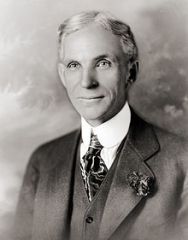
|
Henry Ford
Def: An American industrialist, the founder of the Ford Motor Company, and sponsor of the development of the assembly line technique of mass production. |
|

|
Ronald Reagan
Def: The 40th President of the United States (1981–1989). Prior to that, he was the 33rd Governor of California (1967–1975), and a radio, film and television actor. He won the election many people believe because of his attractive appearance. |
|
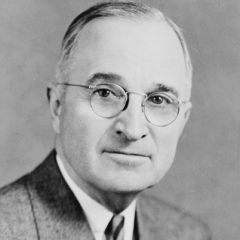
|
Harry Truman
Def: Harry S. Truman became the nation’s 33rd president after Roosevelt died on April 12, 1945 while posing for a portrait in Warm Springs, Georgia. |
|
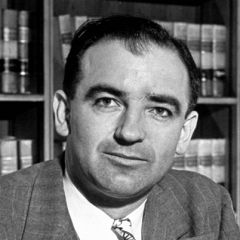
|
Joe McCarthy
Def: McCarthy was a Senator between the 1940s and 1950s. McCarthy spent almost five years trying in vain to expose communists and other left-wing “loyalty risks” in the U.S. government. |
|
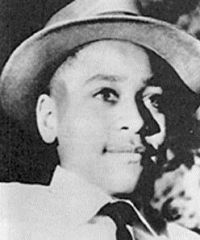
|
Emmitt Till
Def: An African-American boy who was murdered in Mississippi at the age of 14 after reportedly flirting with a white woman. |
|
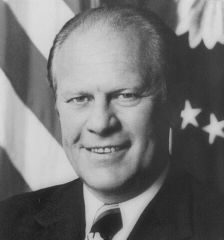
|
Gerald Ford
Def: Was the 38th President of the United States, serving from 1974 to 1977, and prior to this, was the 40th Vice President of the United States serving from 1973 to 1974. He was the first person appointed to the Vice Presidency under the terms of the 25th |
|
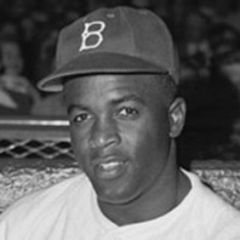
|
Jackie Robinson
Def: American baseball player who became the first African American to play in Major League Baseball. |
|
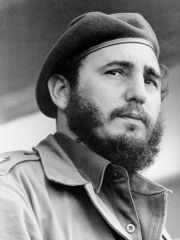
|
Fidel Castro
Def: Cuba’s revolutionary, Castro openly declared himself a communist and welcomed aid from the Soviet Union. |
|
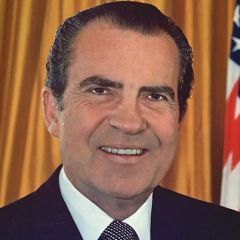
|
Richard Nixon
Def: Elected US President in 1969 and began to pull troops from Vietnam. |
|
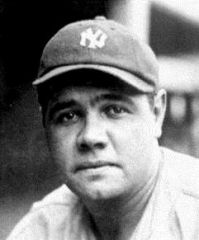
|
Babe Ruth
Def: Was an American baseball player who spent 22 seasons in Major League Baseball (MLB) playing for three teams (1914–1935). Known for his hitting brilliance, Ruth set career records in his time for home runs |
|
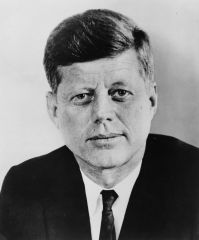
|
John F. Kennedy
Def: He was elected the 35th president of the United States in January 1961. |
|
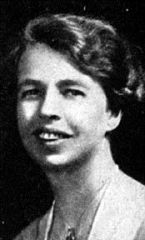
|
Eleanor Roosevelt
Def: Wife of FDR, a social reformer who combined her deep humanitarian actions with great political skills. |
|
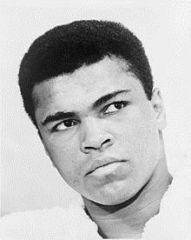
|
Muhammad Ali
Def: An American former professional boxer, philanthropist, and social activist. |
|
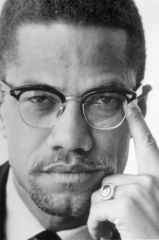
|
Malcolm X
Def: Malcolm X was a very popular civil rights activist. Her was also an Islamic minister after he was released from prison in 1950. |
|

|
FDR
Def: Was the 32nd President of the United States (1933–1945) and a central figure in world events during the mid-20th century, leading the United States during a time of worldwide economic depression and total war. |
|
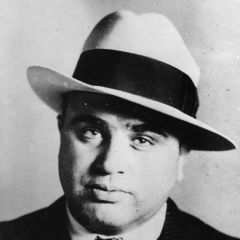
|
Al Capone
Def: Was an American gangster who led a Prohibition-era crime syndicate. The Chicago Outfit, which subsequently also became known as the "Capones," was dedicated to smuggling and bootlegging liquor. |
|
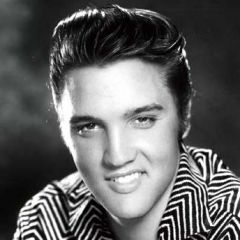
|
Elvis
Def: Was an American singer and actor. A cultural icon, he is commonly known by the single name Elvis. |
|
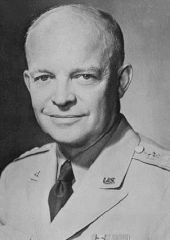
|
Dwight Eisenhower
Def: Dwight D Eisenhower was the general of operation torch, and evasion of access controlled North Africa. The president during the time that both countries had created the H-bomb. |
|
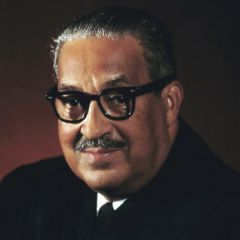
|
Thurgood Marshal
Def: Was an Associate Justice of the United States Supreme Court, serving from October 1967 until October 1991. Marshall was the Court's 96th justice and its first African-American justice. |
|
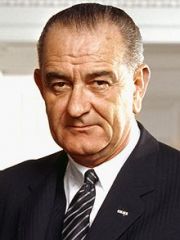
|
LBJ
Def: Was the 36th President of the United States (1963–1969), a position he assumed after his service as the 37th Vice President of the United States (1961–1963). He is one of only four people who served in all four elected federal offices of the United States: Representative, Senator, Vice President, and President. |
|
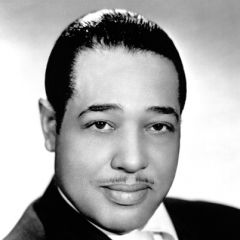
|
Duke Ellington
Def: Was an American composer, pianist, and big-band leader. He was popular in the 1920s during the Jazz Era. |
|
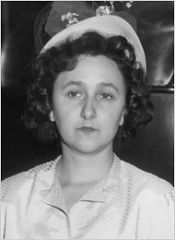
|
Ether Rosenberg
Def: She was a United States citizens convicted of conspiracy to commit espionage during a time of war, and executed. |
|
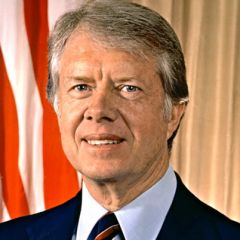
|
Jimmy Carter
Def: Is an American politician who served as the 39th President of the United States. |

